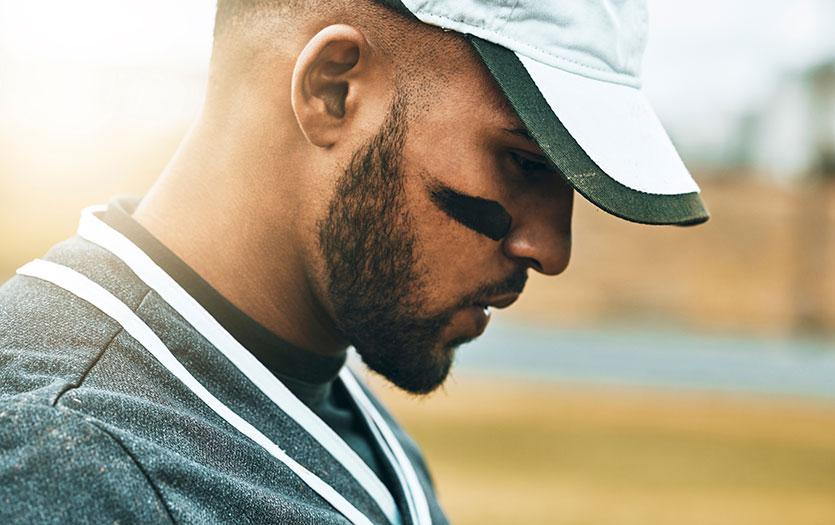
Youth sports specialization is a concerning trend and hot topic around the country. Aaron Watters, MD, PPG – Sports Medicine, has presented throughout the region on the effects of youth sports specialization. Here, he discusses the dangers of early sports specialization and what parents can do to help their young athletes develop in a healthy way.
Defining youth sports specialization
Youth or early sports specialization is defined as intense, year-round training in a single sport, typically prior to age 12.
How common is youth sports specialization?
According to the National Council of Youth Sports, 60 million kids participate in sports. Studies have shown that 60% of youth athletes specialize, typically prior to age 12 and starting as early as age 8.
What’s driving the trend toward kids specializing at a younger age?
A societal shift from child-driven, free-play activity to coach- or parent-driven, deliberate, intense training seems to be the primary driver. Some parents and coaches believe that intense practice and specialization at an early age is the best way to maximize performance and athletic achievements.
When other children specialize early and are seemingly more advanced than your own, there can be an intense pressure to help your child be as good as their peers. But, the goal is not to develop the best 12-year-old athlete – it’s to develop a healthy, lifelong participant in sports and exercise.
What are the effects of youth sports specialization?
We know that youth sports specialization decreases access to sports for all youth. Why? Kids that develop later – the physical “late bloomers” – are often left behind if they’re not as advanced in a specific sport as others their age.
Because this process weeds kids out before they’re fully developed, they become much less likely to play sports at all. This leads to increased obesity rates and the potential for developing chronic medical conditions, such as diabetes or high blood pressure, by adolescence.
Those that do participate in a single sport from an early age see an increased risk of overuse injuries from the repetitive stress put on their bodies. We also see a higher rate of burnout and depression in single-sport athletes, often related to isolation from their peers, pressure from parents and coaches, in addition to dealing with recurring injuries.
What are some common injuries seen as a result of early sport specialization?
- Little league shoulder and little league elbow (overuse injuries that occur in kids with open growth plates and are a result of repeated throwing without enough rest)
- UCL tears
- Rotator cuff strains and tears
- Patella tendonitis
- Patellofemoral pain syndrome (damage to the cartilage under the knee cap)
- Stress fractures
- Shin splints
Why should parents encourage kids to play multiple sports?
The varied motor skills and fundamentals developed through different sports make multi-sport athletes better all-around athletes. There’s a decreased risk of repetitive, overuse injuries when kids are learning and performing different movements and activities.
A study of 228 male and 115 female student athletes at the University of Wisconsin revealed that only 16% of them were highly specialized as high school freshman. That number climbed to just over 41% by their senior year of high school, when specialization may be more necessary in order to continue playing in college. Contrary to popular belief, delaying specialization until kids reach adolescence – the opposite of early specialization – actually leads to a greater chance of playing that sport at an elite level.
What can parents do to encourage healthy sports participation?
- Play with your children from an early age to help develop motor skills
- Allow your kids to climb and explore
- Offer a variety of different size balls to throw and kick. Before any child can learn a sport, they must have the fundamental movement skills to allow them to play that sport. A child must be able to kick a ball before playing soccer or throw a ball prior to playing baseball.
- As your child grows, encourage them to sample and play multiple sports
- Delay single sport specialization until your child is at least in high school
How does youth sports participation lead to a healthier society?
Children that grow up playing sports or living an active lifestyle are not only benefitting themselves, but they’re also setting up future generations for success. Sound like a stretch? A 2016 study published in the American Academy of Pediatrics found that physically active children:
- Are 1/10th as likely to be obese
- Score up to 40% higher on tests
- Report less smoking, drug use, pregnancy and risky sexual behavior
- Are 15% more likely to go to college
In addition, adults that were physically active as children also earned 7-8% higher salaries, had lower health costs, were more productive at work and had a reduced risk of heart disease, stroke, cancer and diabetes.
The study also found that kids of active moms were two times more likely to be active themselves. This leads to a cycle of active children becoming active teens and active adults, who become active parents and have active children. Participation in youth sports is essential to our society staying healthy.



